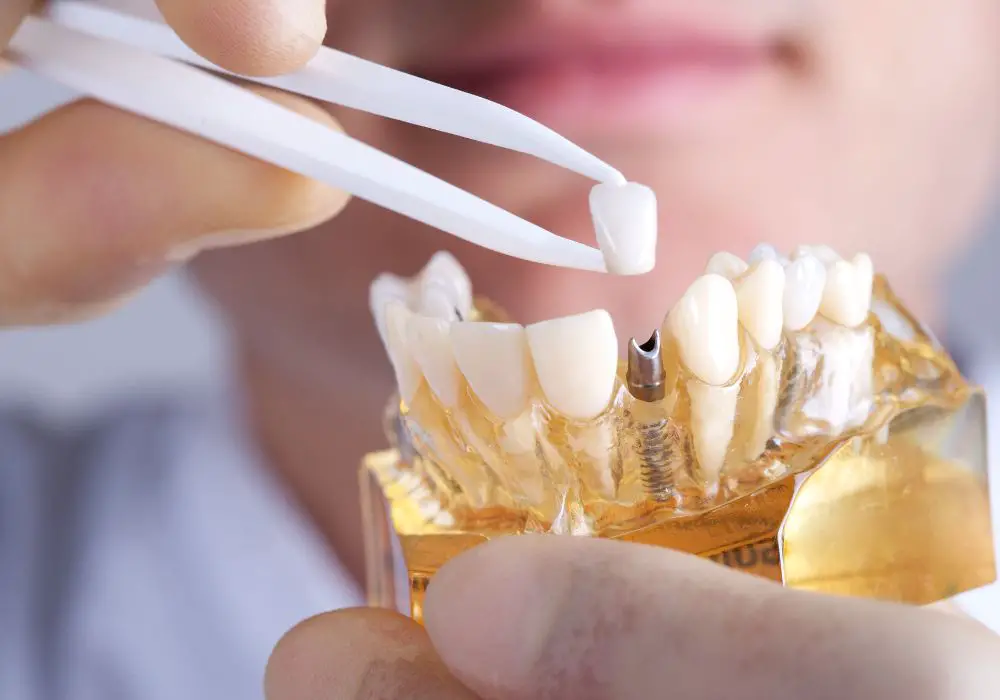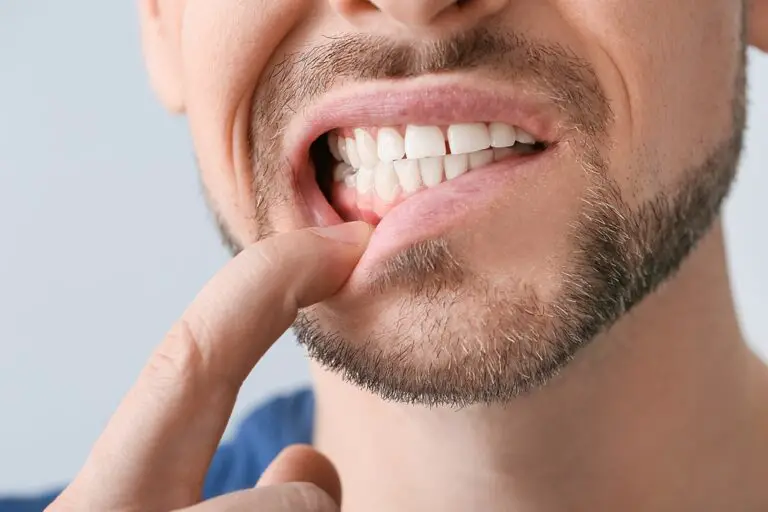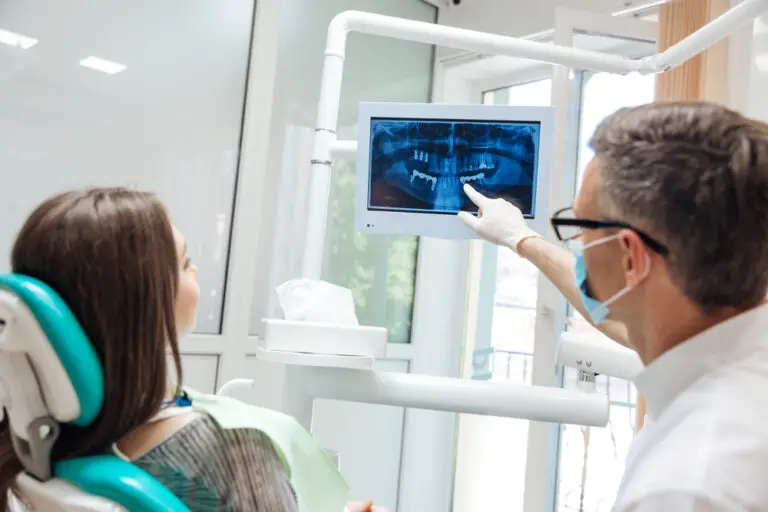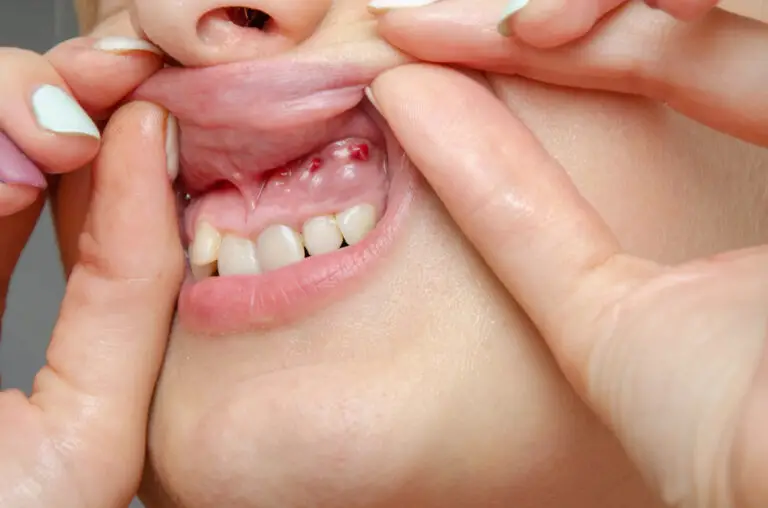Dental implants are prosthetic replacements for missing teeth that are surgically embedded into the jawbone. They have become the premier tooth replacement option due to their permanence, stability, natural appearance, and high success rates. However, patients often wonder just how permanent implants can be.
This article provides an in-depth look at the longevity of dental implants. We will examine average lifespan estimates, factors that affect permanence, proper care and maintenance, options if implants fail, and what impacts their durability.
Overview of Dental Implants
Before analyzing the permanence of dental implants, let’s briefly review what they are and how they work.
- Dental implants consist of a titanium screw that is surgically embedded into the jawbone, with a visible abutment protruding from the gums.
- A realistic-looking porcelain crown is attached to this abutment, completing the visible portion of the implant.
- The embedded titanium implant fusees to the jawbone in a process called osseointegration. This creates a highly stable anchor for the replacement tooth.
- Implants can replace individual teeth or support fixed bridges and removable dentures through multi-unit abutment systems.
- They preserve bone volume compared to conventional bridges and dentures. The stimulation from chewing prevents bone loss in the jaw.
- Implants have high success rates of around 95% over 10-15 years with optimal conditions. This makes them a reliable permanent solution.
Now that we have reviewed the basics of what implants are, let’s analyze the key factors that determine their longevity and just how permanent they can be.
How Long Do Dental Implants Last?
Dental implants are designed to be a permanent solution for missing teeth. However, their lifespan depends on a variety of factors.
Durability of Single Tooth Implants
For individual tooth replacements, dental implants can have excellent long-term prognoses:
- With optimal bone quality and proper oral hygiene, single tooth implants have over a 95% chance of lasting 10-15 years.
- With no major complications or risk factors, the expected lifespan of a single tooth implant can exceed 25 years.
- With periodic replacement of worn components like crowns and abutments, some single tooth implants have been documented to last over 40-50 years. This requires ideal conditions.
- Single tooth implants in the anterior incisor region tend to have higher long-term success rates than those placed in posterior/molar areas.
Durability of Full-Arch Fixed Implant Bridges
For patients requiring replacement of all upper and/or lower teeth, full-arch implant bridges can also demonstrate impressive longevity:
- Full-arch bridges on 4-6 dental implants generally have a 15-25 year lifespan on average.
- With good oral hygiene and routine replacement of worn components, these bridges have been documented to last over 30 years in some patients.
- Placing 6 or more implants instead of the minimum 4 tends to improve long-term prognosis and reduce failure rates.
- Spreading implants over a broader surface area also enhances stability and durability compared to concentrating them centrally.
Durability of Implant-Supported Overdentures
Implants can support removable overdentures via attachments that snap into place. The lifespan of these depends on several factors:
- For lower dentures, using 2-4 implants provides excellent retention and stability. These typically last 10-15 years on average.
- Upper dentures supported by implants have shorter lifespans of 5-10 years on average since bone quality in the upper jaw is poorer.
- Using at least 4-6 implants instead of just 2 extends the lifespan of overdentures by spreading forces over more implants.
- Periodic replacement of worn attachments, o-rings, and retaining screws helps optimize denture longevity when using implants.
Importance of Regular Exams and Maintenance
These lifespan estimates assume patients follow recommendations for professional exams and maintenance:
- Implants and implant-supported restorations should be professionally evaluated at least once a year with a comprehensive oral exam.
- More frequent appointments every 6 months may be recommended for periodontal susceptible patients or those with some health conditions.
- Professionally cleaning implants every 6 months is important to clear any hard-to-reach bacteria and tartar.
- Replacing worn components promptly when recommended preserves the underlying implant and bone health.
- Issues like bone loss, infection risks, and prosthetic wear can be caught early with regular exams.
Following up regularly and replacing worn parts as needed are key to maximizing implant lifespan.
Factors That Influence Implant Longevity

Many factors related to the patient, surgery, and aftercare impact how permanently dental implants integrate and how long they can potentially last:
Bone Density and Volume
Since implants fuse to the jawbone itself, bone quality is a key factor influencing longevity:
- Dense bone provides excellent stability and durability for implants. Porous, low-density bone is more prone to implant failure.
- Adequate bone volume is needed for the implant to be fully embedded into the jaw. Resorbed ridges or narrow sinuses can inhibit integration.
- Grafting procedures may be done before implant placement in patients with insufficient bone density or vertical height.
- Past periodontal disease, tooth loss, and aging can diminish bone volume and density, potentially shortening implant lifespan.
General Health Conditions
Medical status and some health habits can affect osseointegration and risks of failure:
- Diabetes when poorly controlled leads to reduced blood supply and compromised healing that may undermine integration.
- Immunosuppressive therapy for conditions like chemotherapy increases infection risks during initial healing.
- Active periodontal disease with bone loss needs treatment first since it causes further destruction.
- Smoking impairs healing significantly and is linked to 4-6 times higher early failure rates.
Oral Hygiene Habits
Ongoing hygiene after placement is critically important for implant longevity:
- Excellent plaque control is vital since bacterial buildup is the biggest threat to implant health.
- Insufficient brushing and flossing around implants leads to peri-implantitis and progressive loss of supporting bone.
- Careful cleaning around prosthetic components like abutments and crowns is essential too.
- Peri-implant mucositis from poor hygiene may not always lead to complete failure but can shorten lifespan.
Occlusal Forces from Grinding/Clenching
Excess forces from improper bite alignment or habits like bruxism exert excessive stress on implants:
- Grinding and clenching notably increase mechanical strain on implants and prosthetic components.
- Inadequate occlusal adjustment can lead to imbalance in forces transferred to implants.
- This can accelerate the breakdown of stabilizing bone and attachment loss around implants.
- Wearing a nightguard helps protect implants from excessive clenching forces.
Surgical Technique and Implant Design Factors
Aspects like implant placement, design, and materials affect integration success:
- Optimal implant orientation, depth, alignment and spacing from other teeth is crucial for proper fusion.
- Specialized surface coatings on implants encourage better osseointegration for stability.
- One-piece implants may have higher initial success than two-piece implants with connecting abutments.
- Implant diameter and length suited to the anatomical site improves durability.
- Overall, implants from reputed companies made withpremium grade titanium tend to perform better long-term.
The skill and experience of the surgeon placing the implants also significantly influences longevity and success rates.
Options if Implants Fail or Need Replacement

While dental implants are designed for permanence, failures can occasionally occur either early on or years later. But options exist for replacing failed implants:
Early Implant Failure Before Integration
If implants fail to osseointegrate shortly after placement, replacement is usually straightforward:
- After healing, new implants can be placed again at the same sites.
- Success rates for re-implantation are typically over 95% since initial bone volume is usually maintained.
- Adjustments to orientation, depth or drilling protocol can help if poor placement caused early failure.
- An interim denture may be provided for missing tooth replacement during healing.
Late Implant Failure After Integration
Once an implant has been successful for years, later failure is far less likely but still possible in some cases:
- For an integrated implant that eventually fails due to bone loss or infection, new implant placement in the site after healing has good prognosis.
- If significant bone loss occurred, more complex grafting procedures may be required before placing the new implant.
- Infected sites must be treated with antibiotics and debridement before attempting re-implantation.
- The new implant procedure may be more difficult if substantial scar tissue is present at the site.
- Smaller diameter or shorter implants may be used for re-implantation in cases of severely resorbed alveolar bone.
Replacing Worn Implant-Supported Crowns
The porcelain crowns attached to implants also have a finite lifespan:
- If the underlying implant itself remains integrated and healthy, just the worn crown can be replaced by removing it from the abutment.
- Damaged but still functional abutments may just need repair, or can also be swapped for a new component.
- Replacing worn parts restores full function without needing to remove stable implants.
With proper planning and technique, implant failures or complications do not preclude trying again for optimal long-term tooth replacement.
Best Practices for Implant Care and Maintenance
Diligent oral hygiene and care are vital for ensuring dental implants last:
Thorough Oral Hygiene
- Meticulous brushing twice daily using soft or implant-specific brushes.
- Flossing once daily is non-negotiable, preferably with interdental picks for the wide inter-implant spaces.
- Antimicrobial mouth rinses like chlorhexidine or prescription Periogen daily for the first 3 months after placement.
Professional Cleaning and Exams
- Dental hygiene visits every 6 months to remove subgingival calculus from around implants.
- Periodic exams by a dentist to check implants for mobility or signs of infection.
- Annual x-rays to monitor bone levels and look for progressive bone loss if any.
Diet and Habits
- Avoid very hard, crunchy, sticky foods that could damage prosthetics.
- Stop smoking and consuming excessive alcohol for better long-term implant outcomes.
- Wear a nightguard if you grind teeth to prevent excessive implant loading.
Diligent implant care and follow-up are critical for maximizing the longevity of implants and treating any complications early.
FAQs About Dental Implant Permanence and Lifespan
Here are some common questions related to the permanency and longevity of dental implants:
How long do dental implants usually last?
With proper placement and maintenance, implants typically last 10-15 years on average, but can last several decades or even a lifetime with optimal conditions.
Do dental implants need to be replaced every 10-15 years?
The titanium implant itself is designed to last permanently. Only components like crowns and abutments may need periodic replacement after 10-15 years.
Can an implant that has fused come loose years later?
Once integrated, an implant fuses very securely to bone just like a natural tooth root. It won’t spontaneously come loose unless aggressive infection or trauma occurs.
Is there an age limit for getting implants?
There is no absolute age limit, but older patients above 70-75 years have higher failure rates. The jawbone must be adequate to support implants.
Can dental implants potentially last a lifetime if done at a young age?
Implants placed before jaw growth is complete in the late teens may fail once final jaw dimensions are reached. Early 20s is ideal age after maturity.
The Bottom Line
When properly placed and cared for, dental implants can provide permanent tooth replacement with lifespans of several decades. Periodic replacement of abutments and crown prosthetics may be needed, but integrated implants themselves are designed to last permanently in ideal circumstances. Maintaining meticulous oral hygiene and follow-up care is key to maximizing implant durability and longevity.






